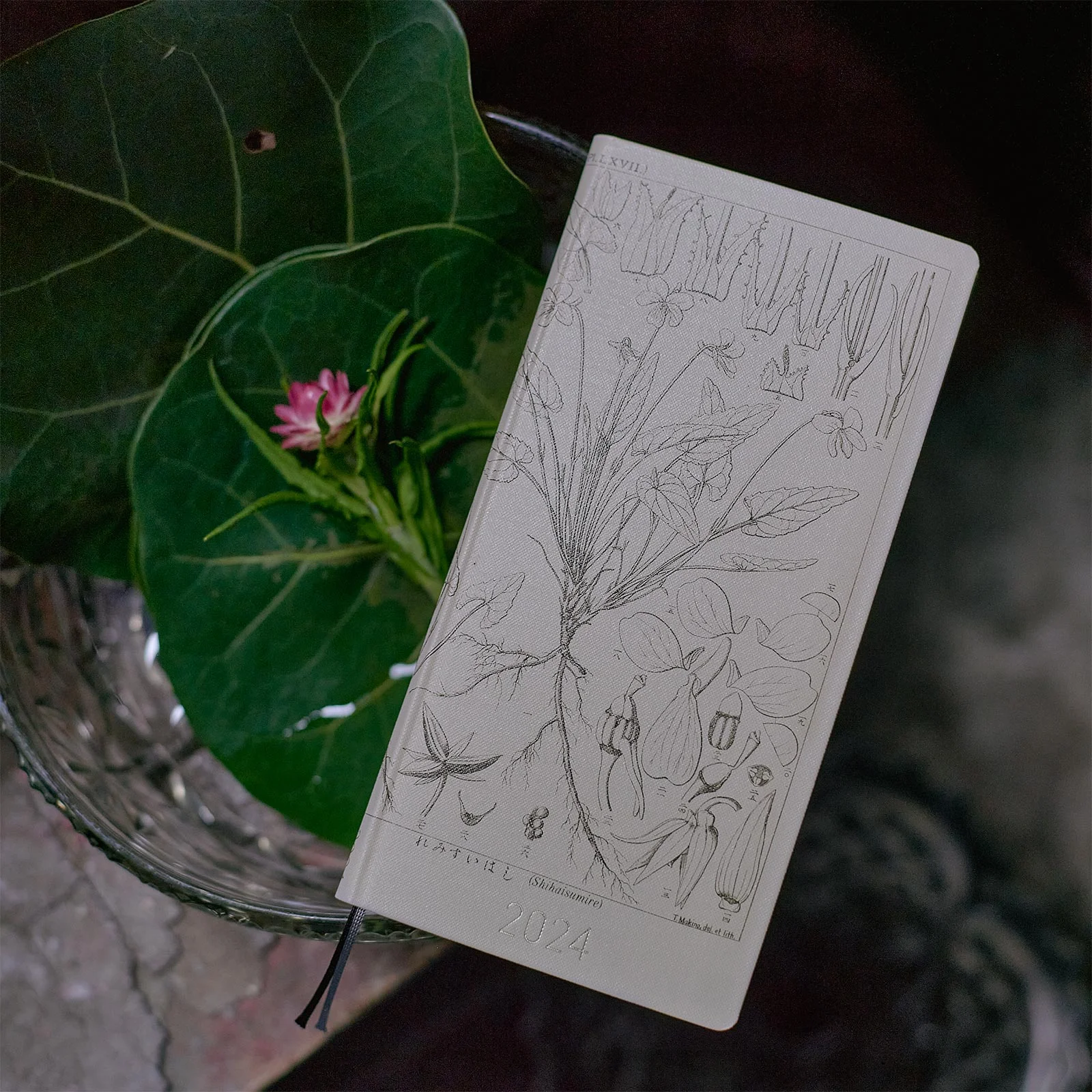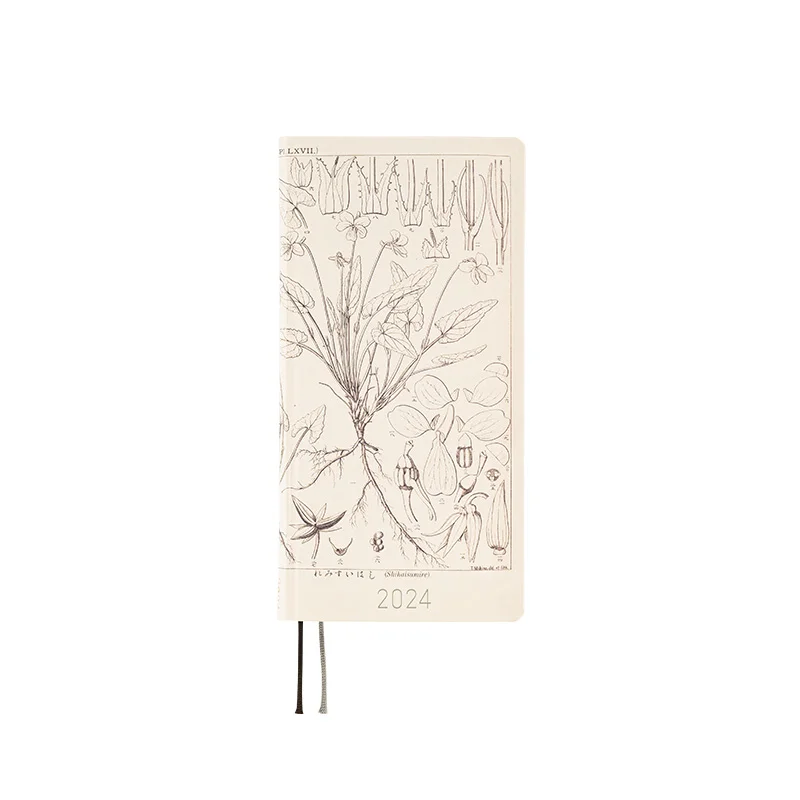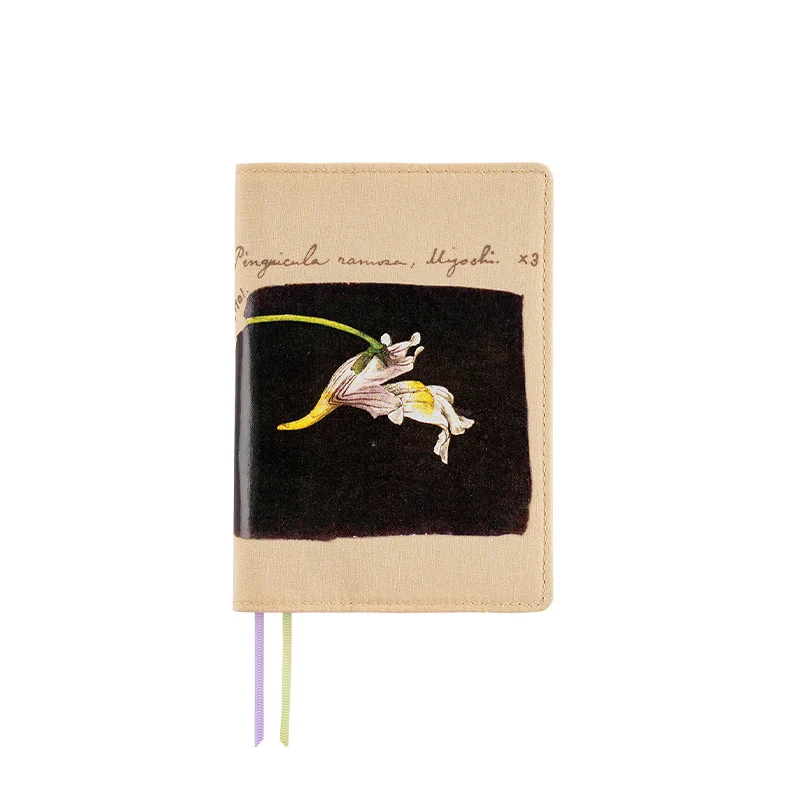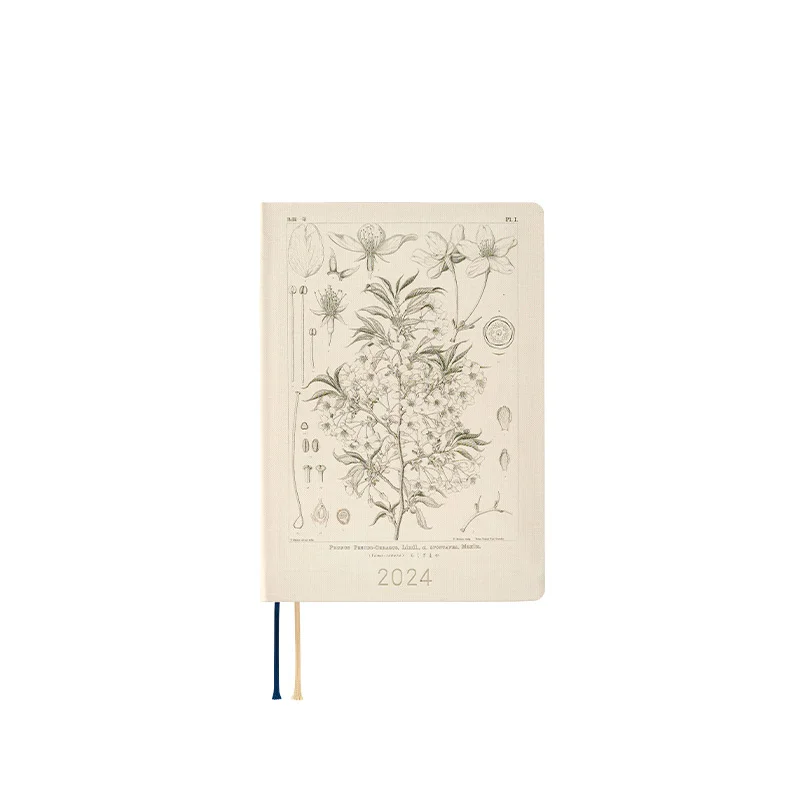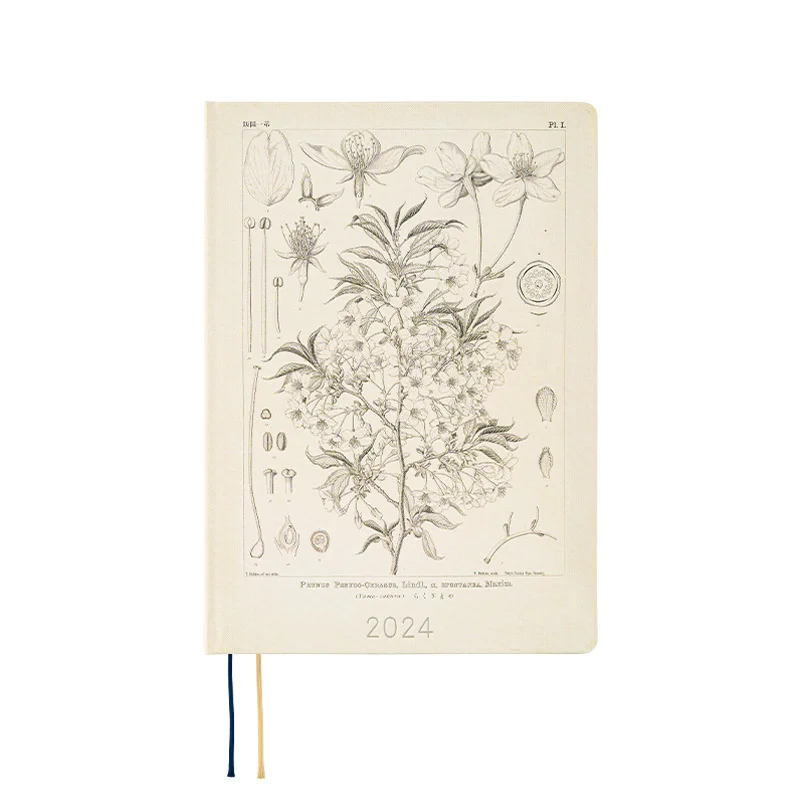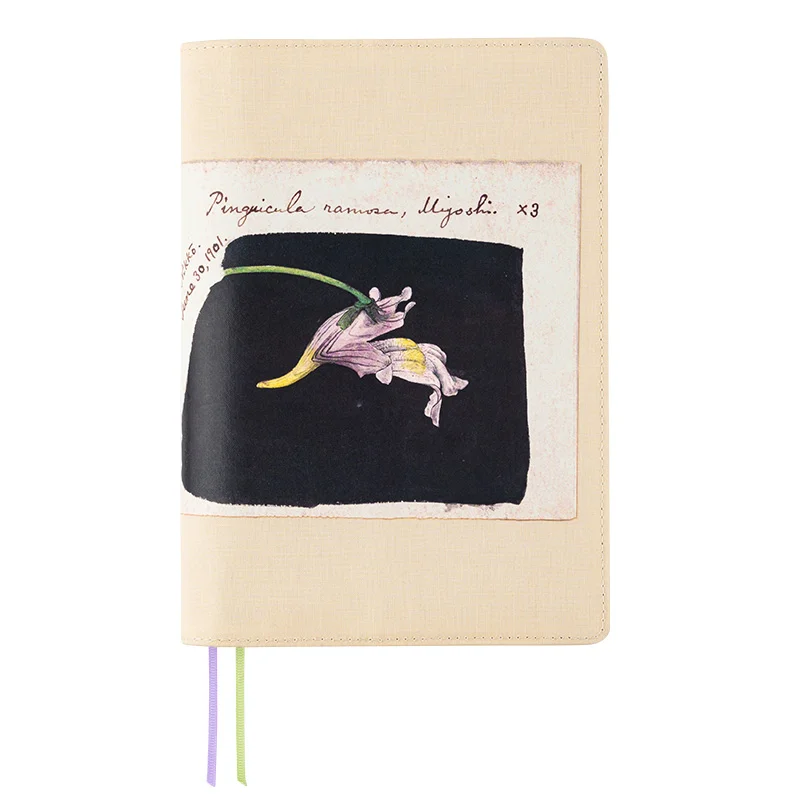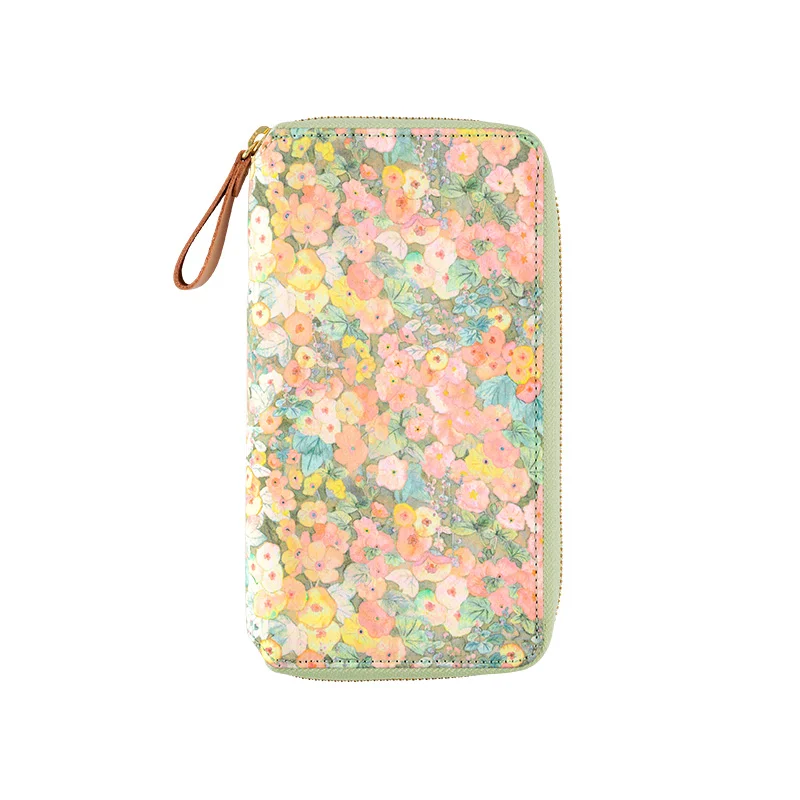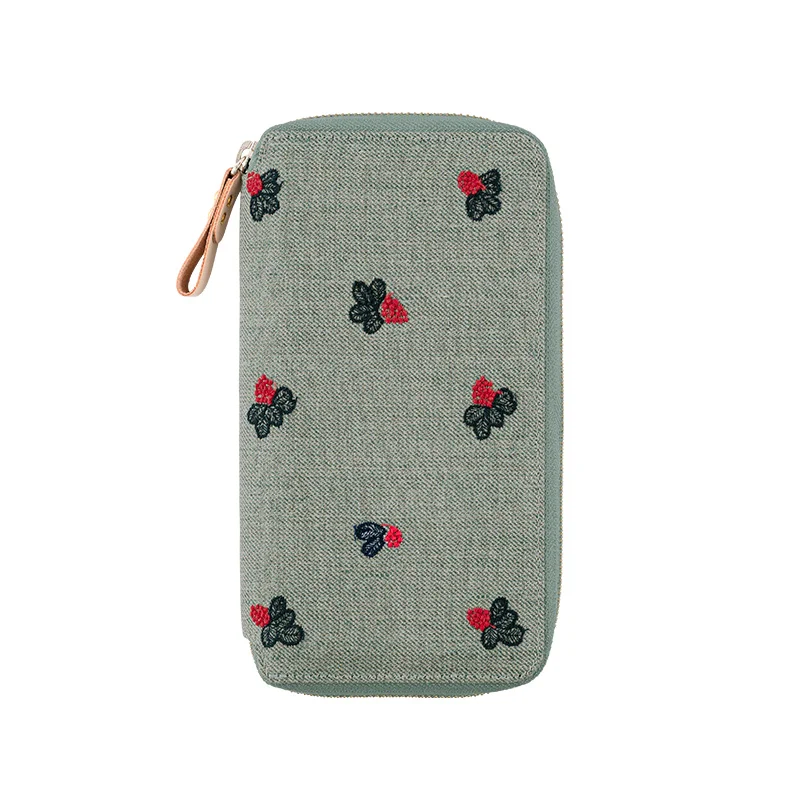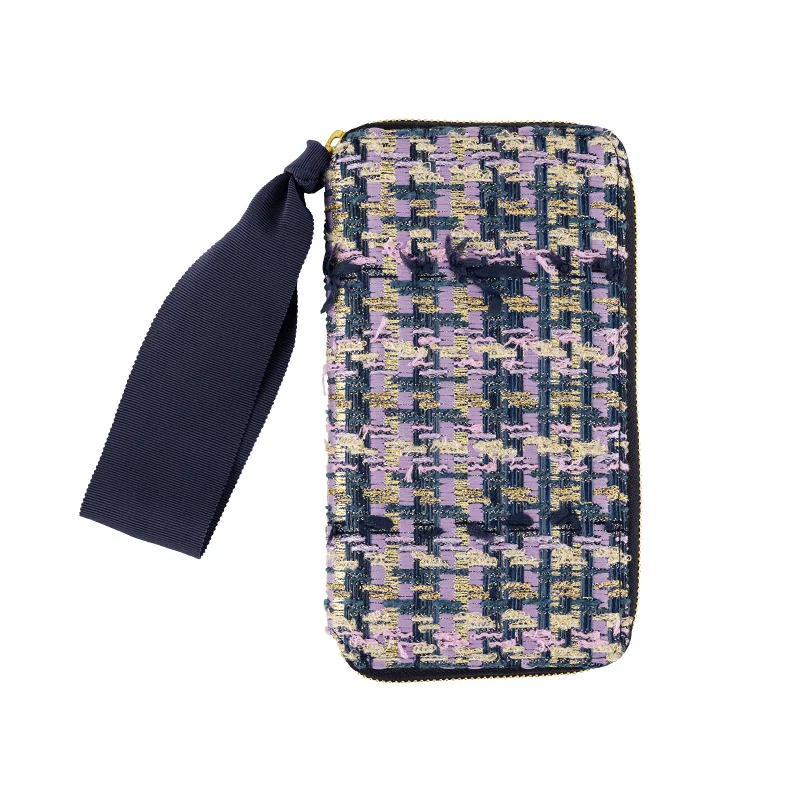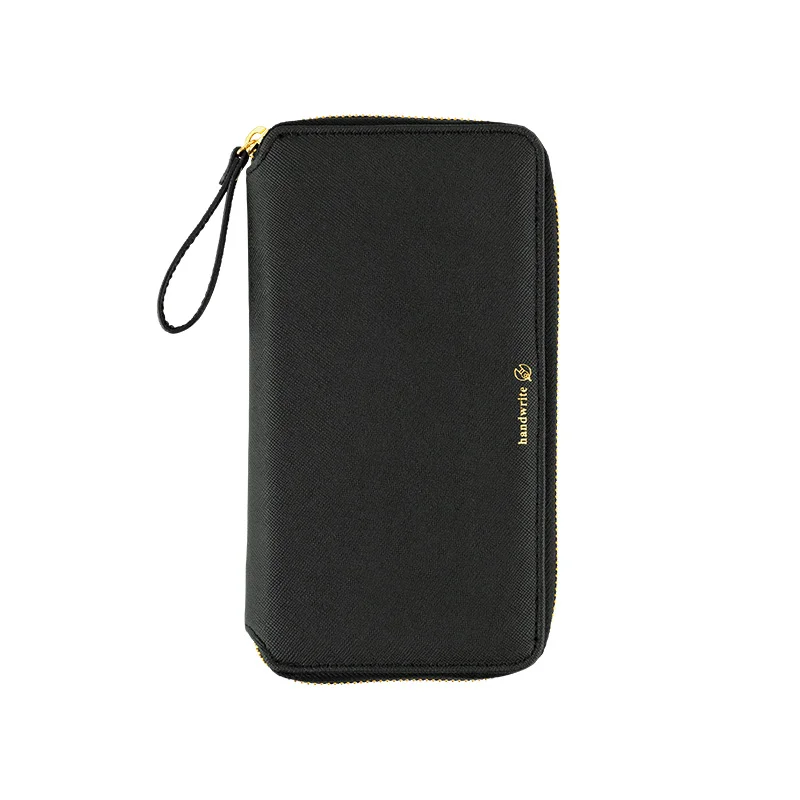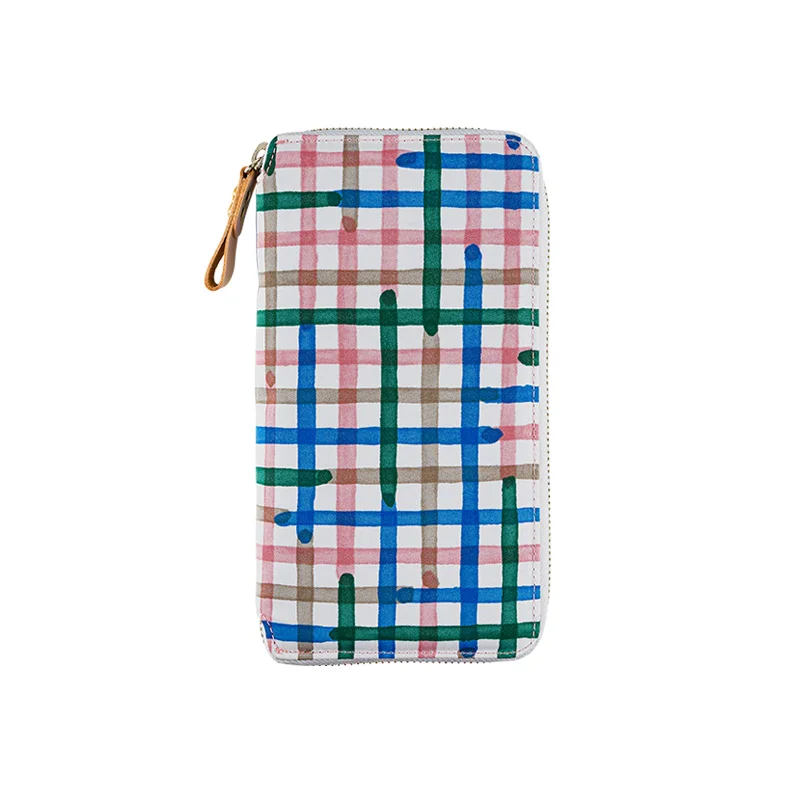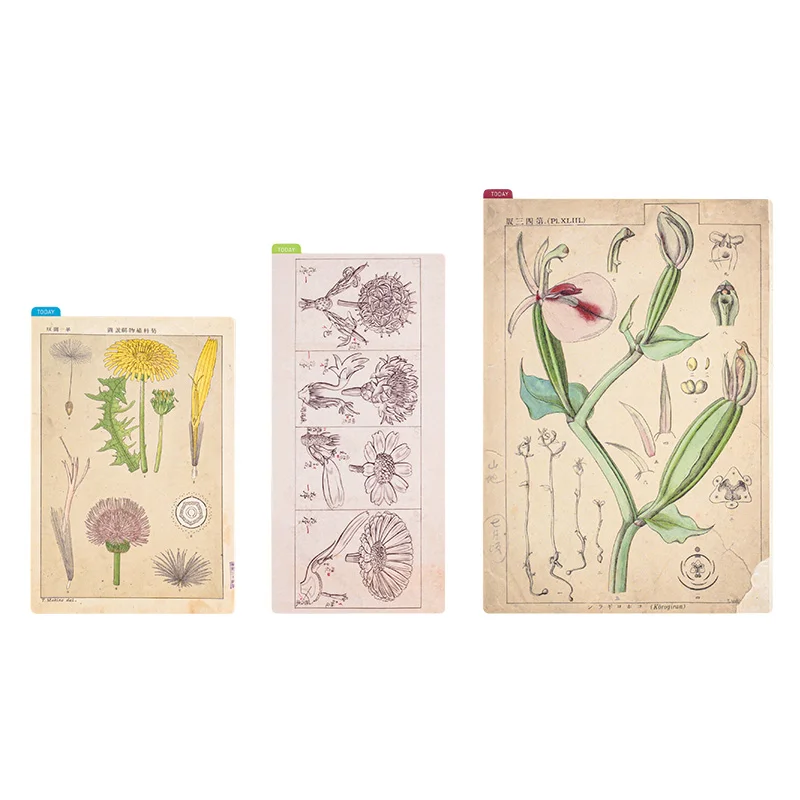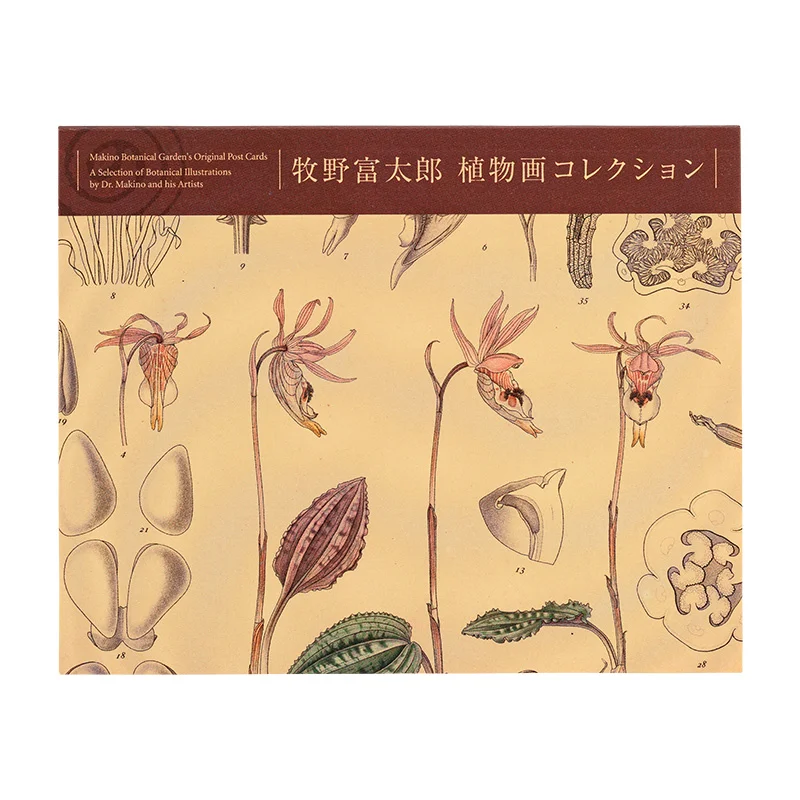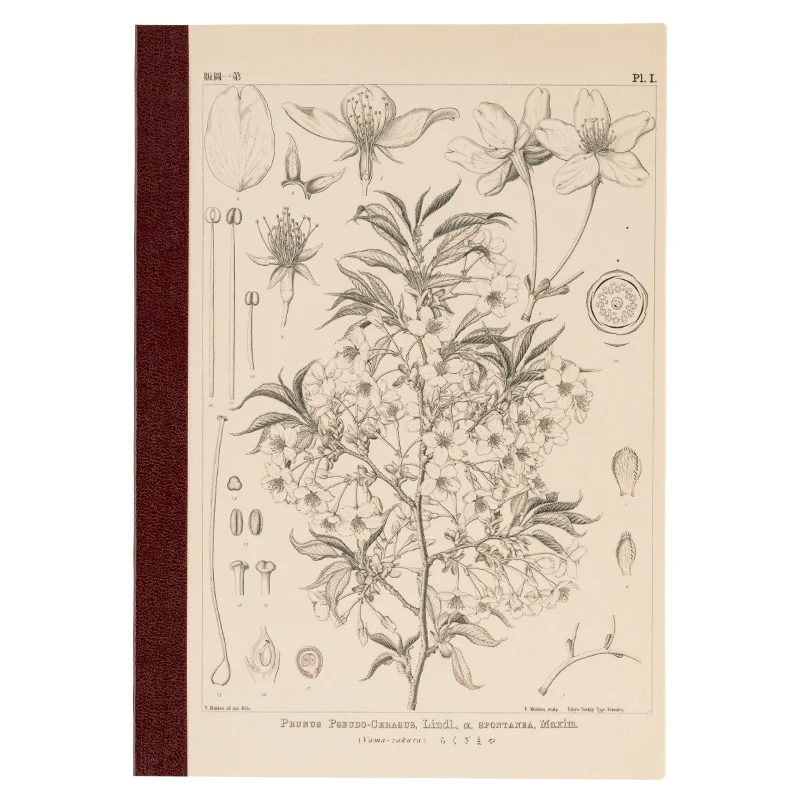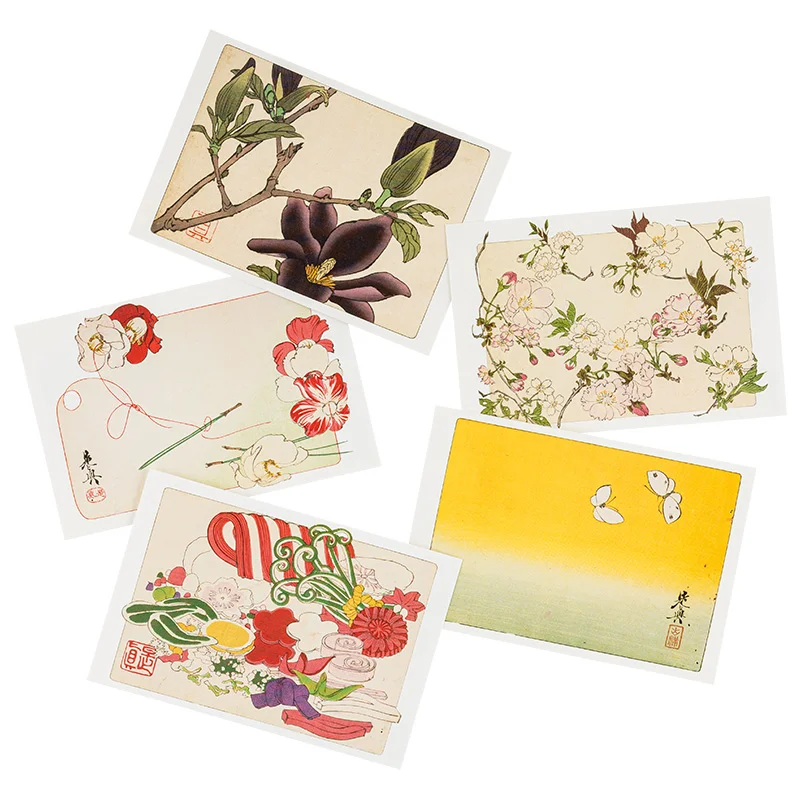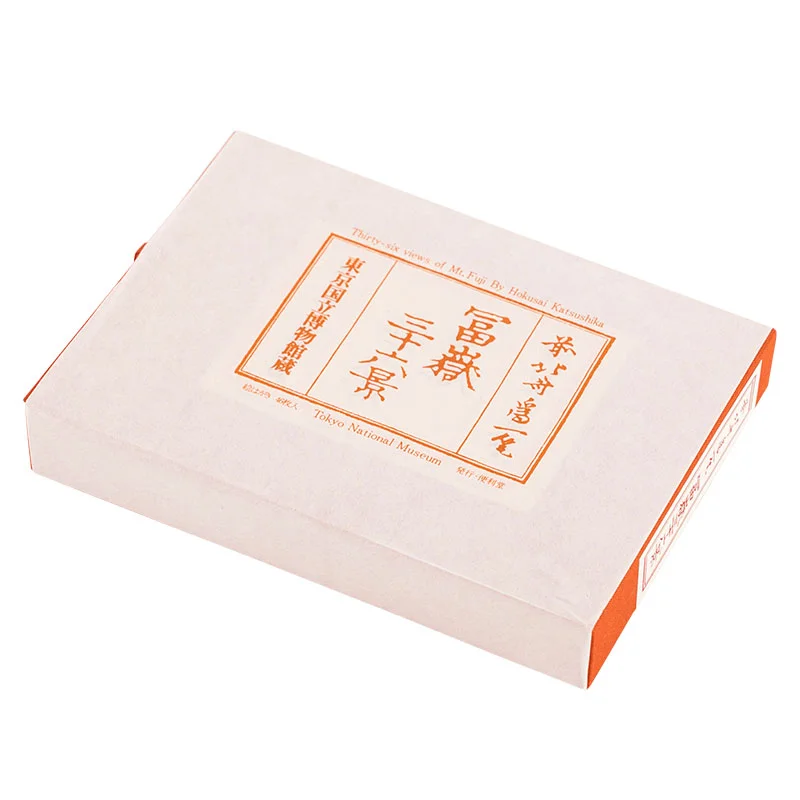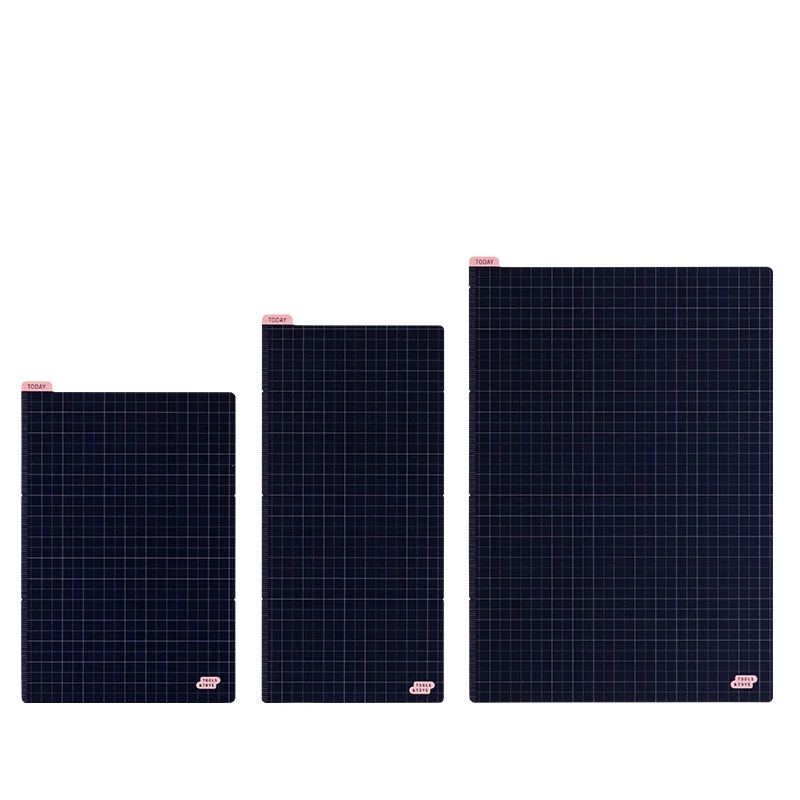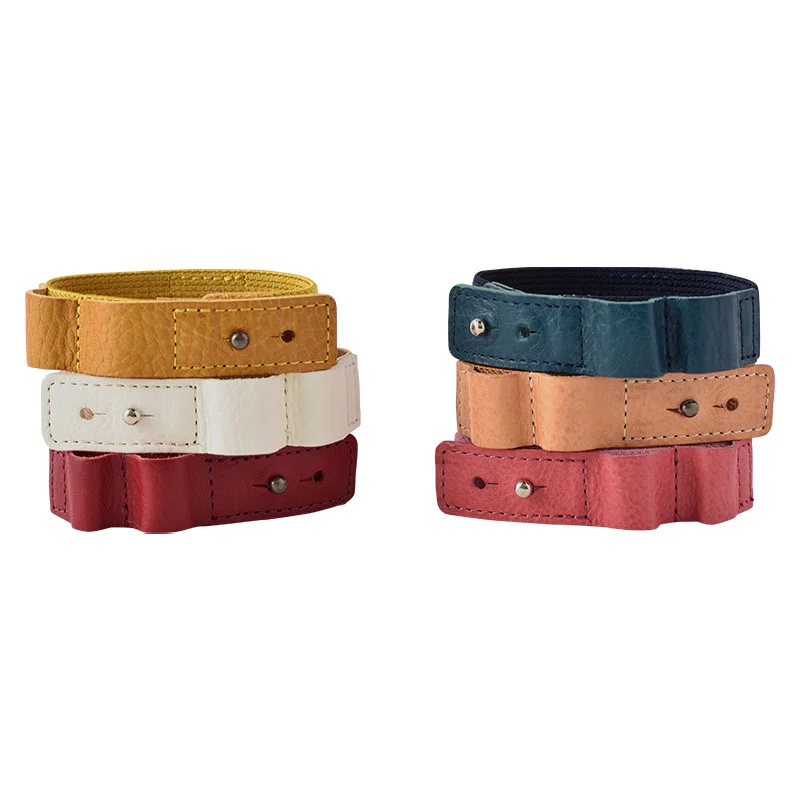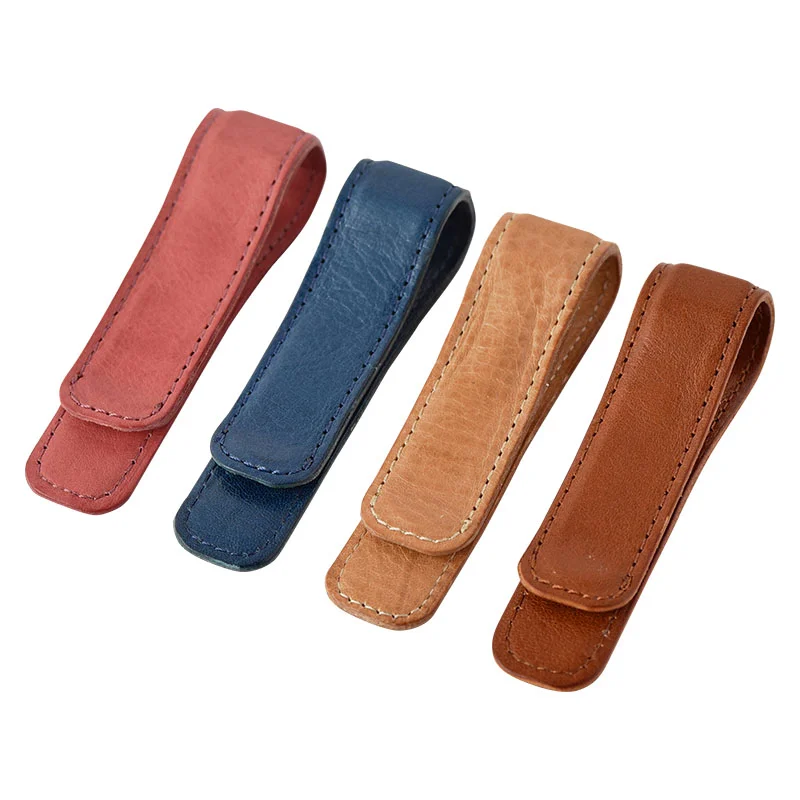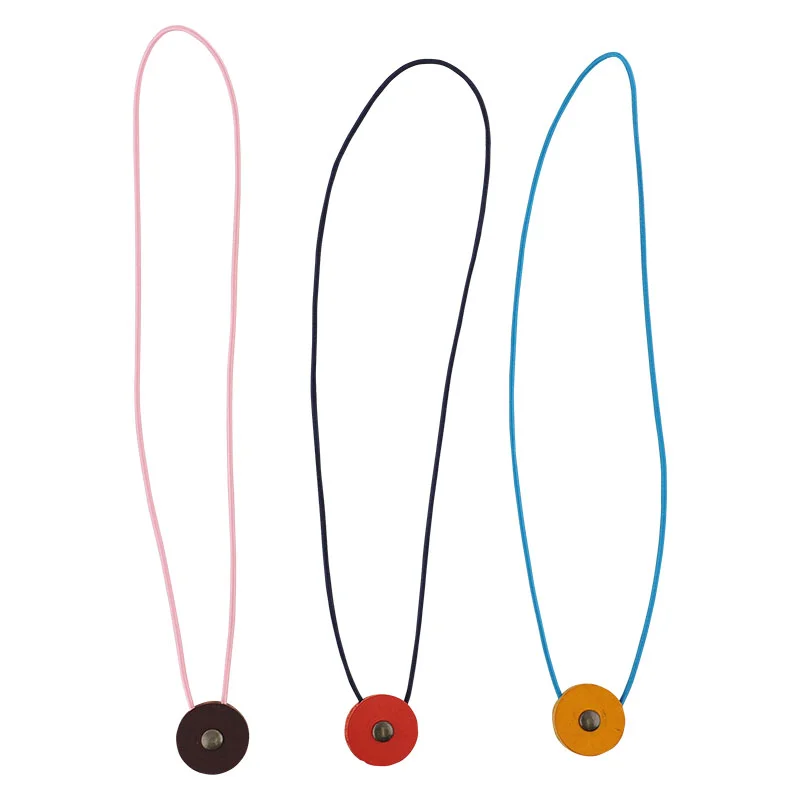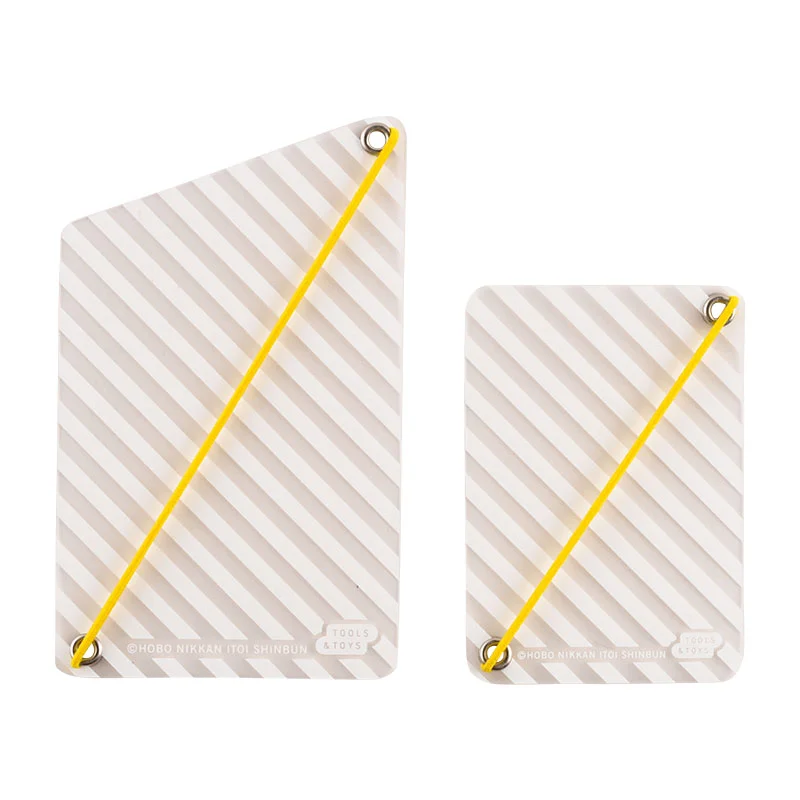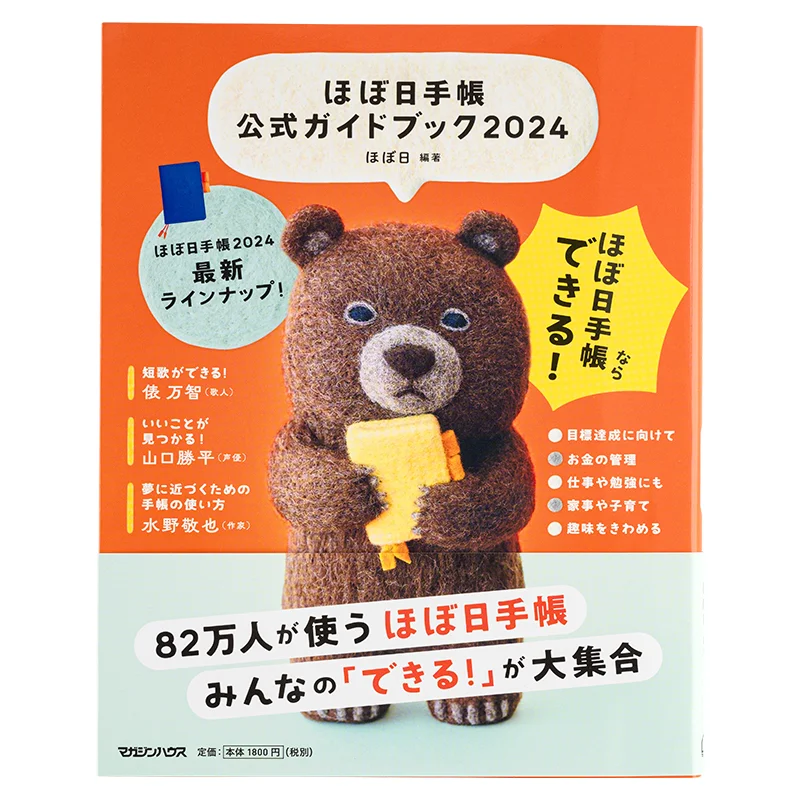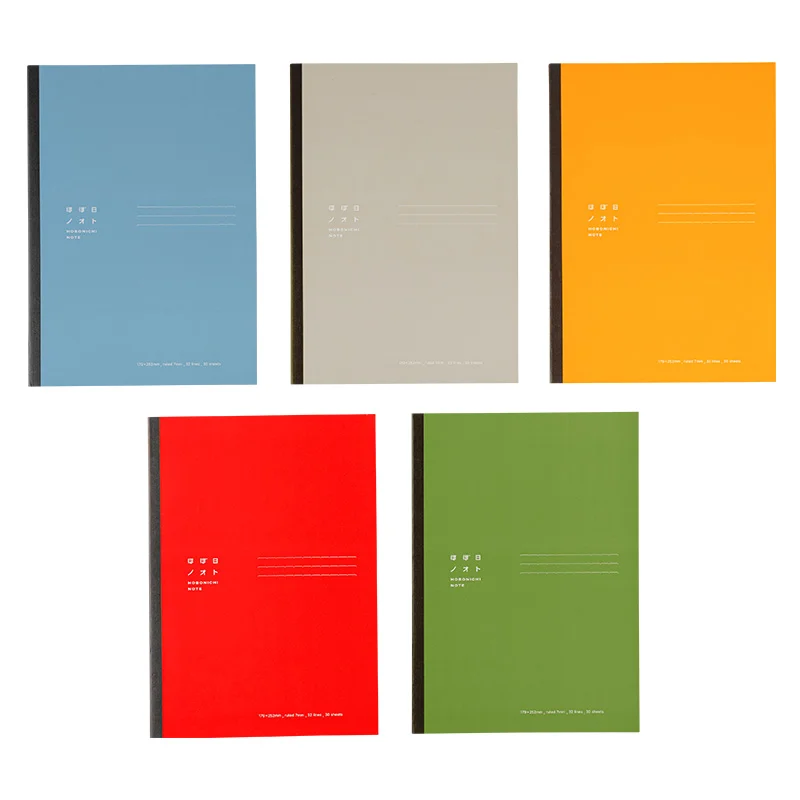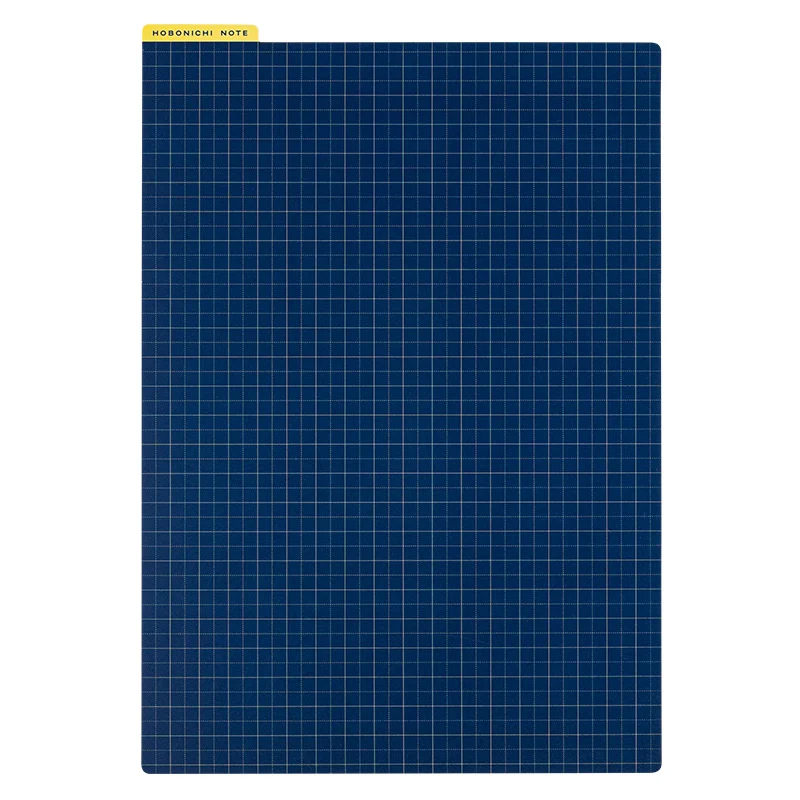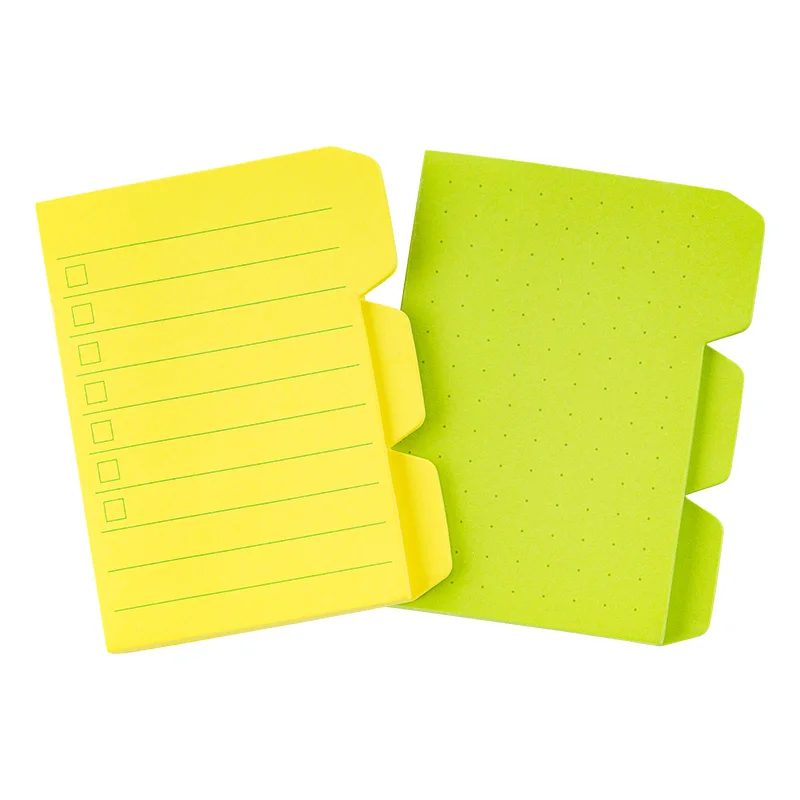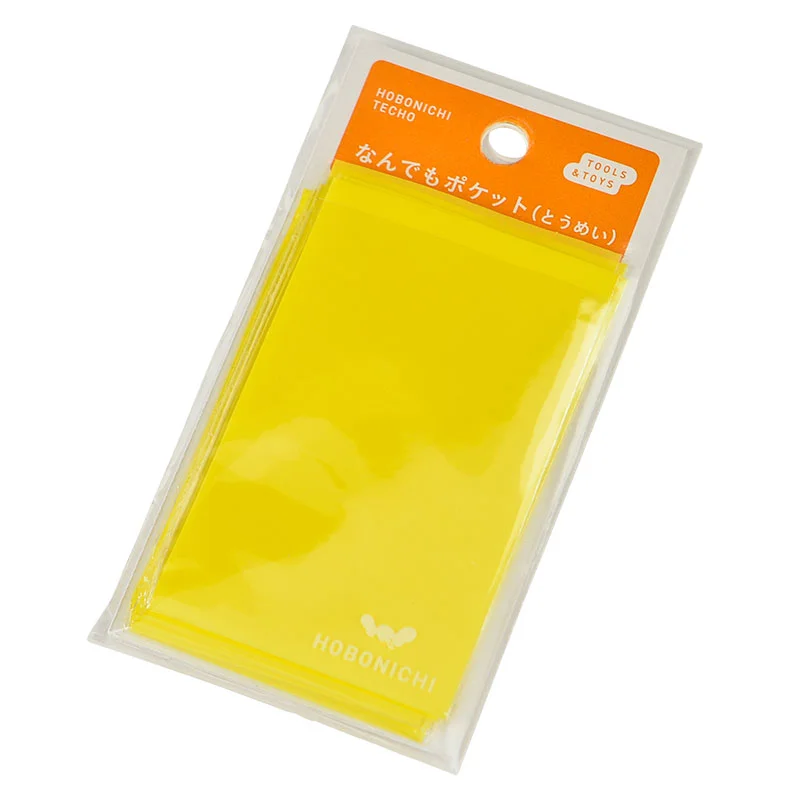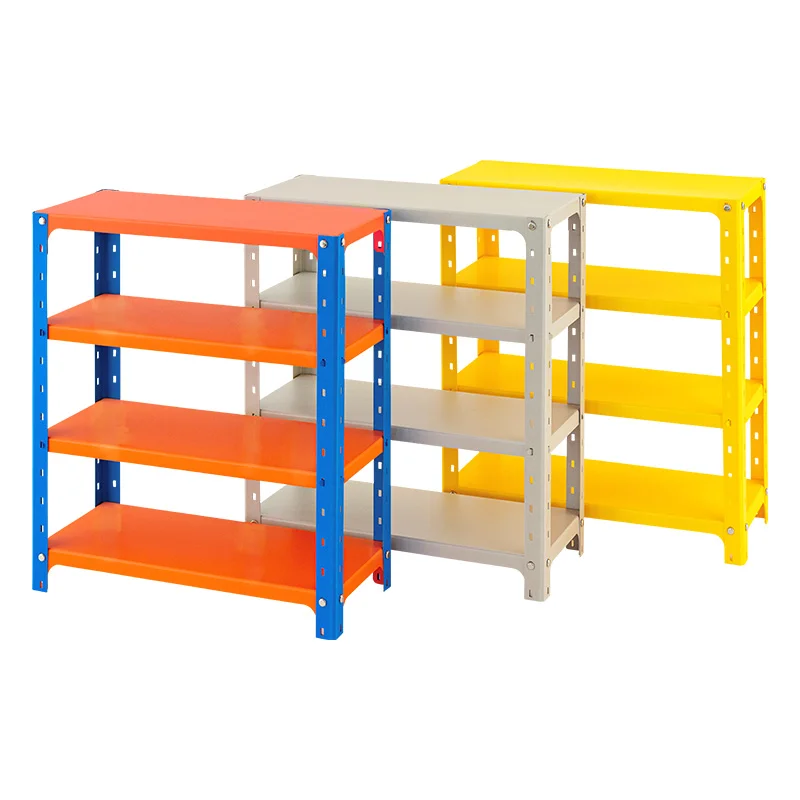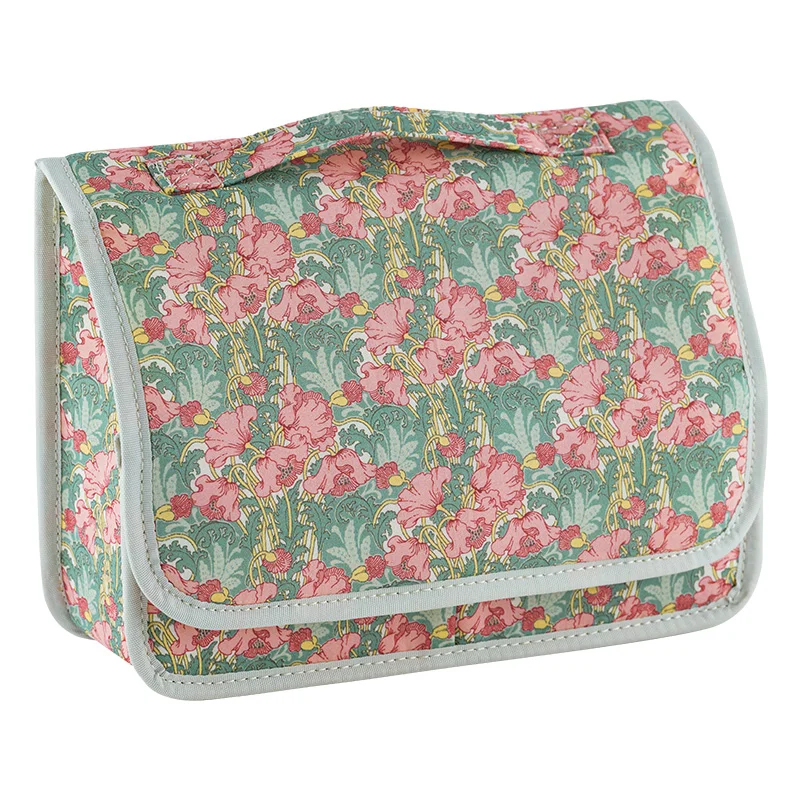Tomitaro MakinoShihai SumireWeeks Hardcover Book
- 2024 New
The Weeks book cover now has the botanical illustration of Shihai Sumire, published by botanist Dr. Tomitaro Makino in 1891. The Shihai Sumire, drawn with precise lines throughout, was depicted in the 67th illustration of the 11th collection of the first volume of “Nippon Shokubutsu-shi Zu-hen.”
The purple flower that blooms in the spring in Tosa, Dr. Makino’s birthplace, got its name—Shihai Sumire, “purple-backed violet” in Japanese—from the color of the underside of the leaves. The petals, stems, leaves, roots, stamens, and pistils are carefully observed and depicted, and each flower part is well-balanced.
The rough cloth cover is inspired from the image of a canvas. The botanical illustrations, born from a keen eye for observation, knowledge, and experience, make this techo an ideal companion for your daily life.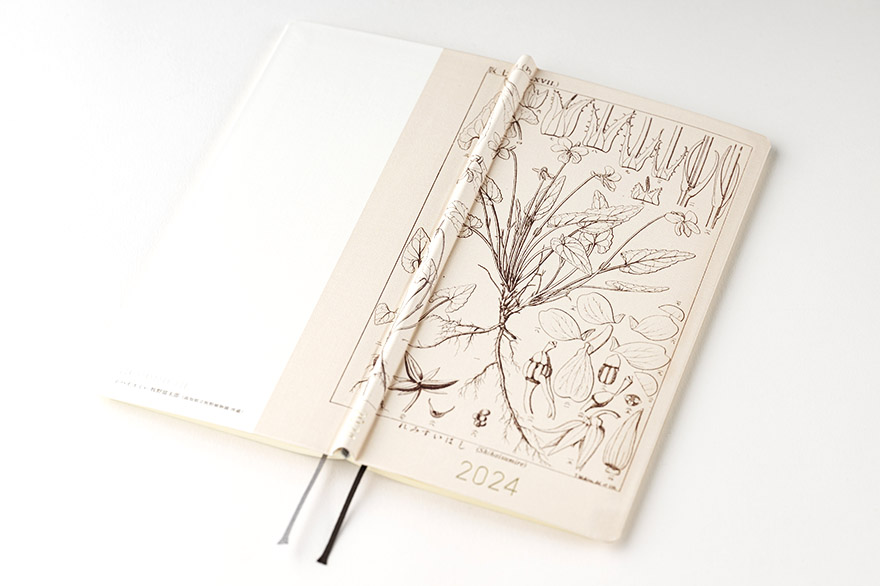
The illustrations were drawn about 130 years ago during the Meiji Era, using loupes and microscopes for detailed observation and creating drawings that show the structures of various parts. Using a Makie painting brush with a bundle of mouse hairs, even the smallest details of leaves and fruits are expressed clearly through shading.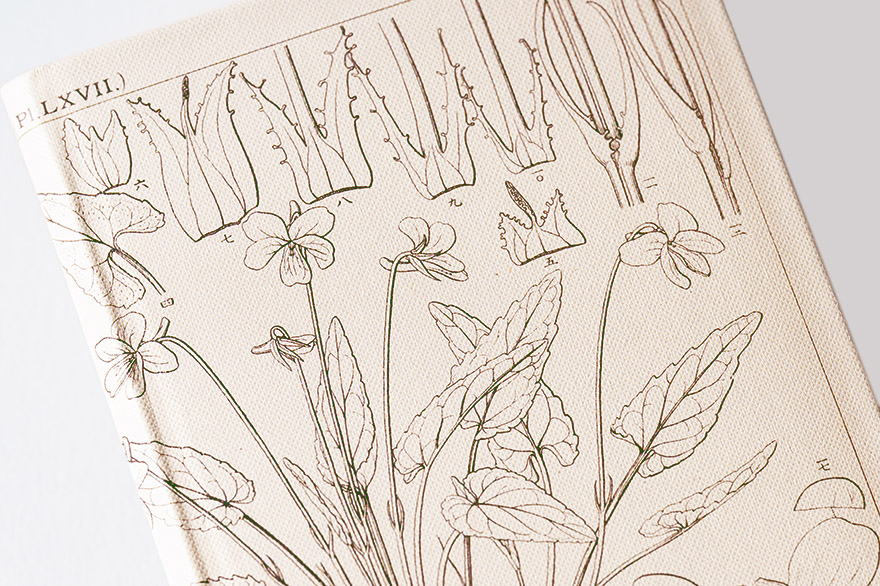
The notation “re-mi-su-i-ha-shi” spelled in hiragana below the stunning botanical illustration reflects the writing style of the Meiji Era, written from right to left, instead of left to right.
We also have a Hobonichi Pencil Board fitted for the Weeks size designed with a botanical illustration drawn by Dr. Tomitaro Makino. This is a pencil board with botanical illustrations of a global thistle, cornflower, chamomile, and calendula printed on it.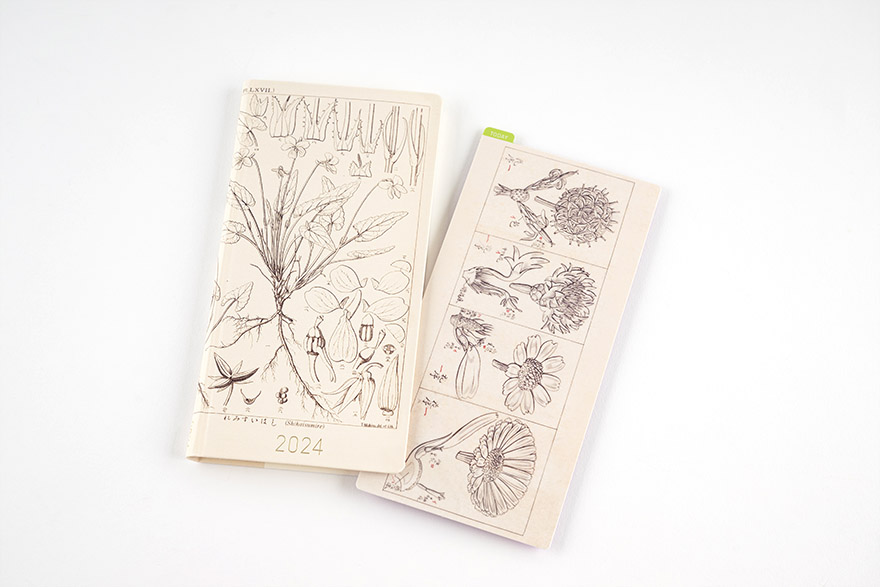
You might also like the additional products in collaboration with Dr. Tomitaro Makino’s botanical illustration! They include an Original size cover “Koshinso,” Cousin size techo cover “Koshinso,” HON “Yamazakura” in A6 size and A5 size, Weeks book “Shihai Sumire,” Hobonichi pencil boards now available in three sizes with the Cousin size joining the lineup, and the Hobonichi Plain Notebook “Yamazakura” in A6 and A5 sizes.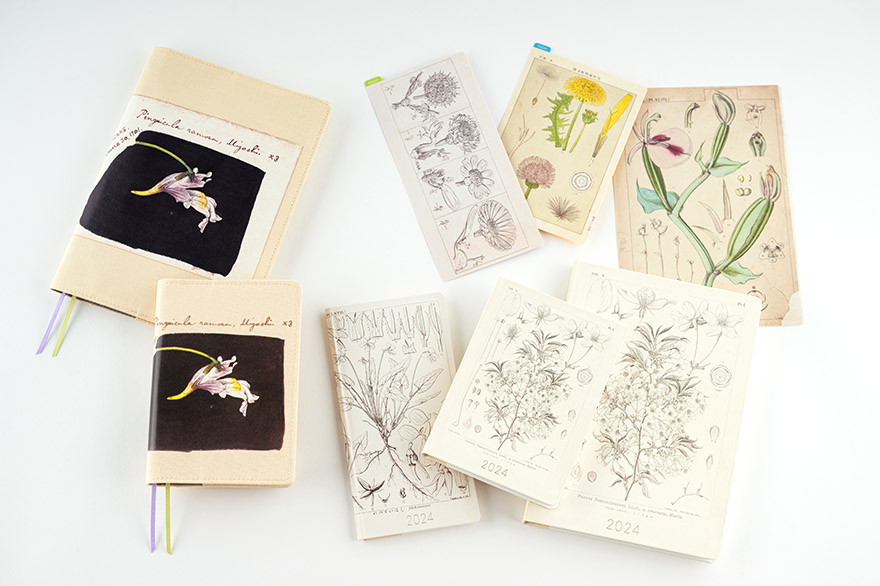
The cover has been constructed as a light hardcover book with some give to it so it still bends.
When you order this Hobonichi Techo Weeks, you’ll receive a clear, adhesive corner pocket you can stick anywhere you like.
From the 2024 April-start version for the Weeks, the book uses thin and light yet durable Tomoe River S paper. The paper has supported the Hobonichi Techo for over 20 years with its special characteristics, but it’ll be undergoing an overhaul starting with the 2024 edition techos. The paper is more resistant to bleed through, lighter despite being the same thickness, and has a smoother surface by adjusting the fibers of the paper.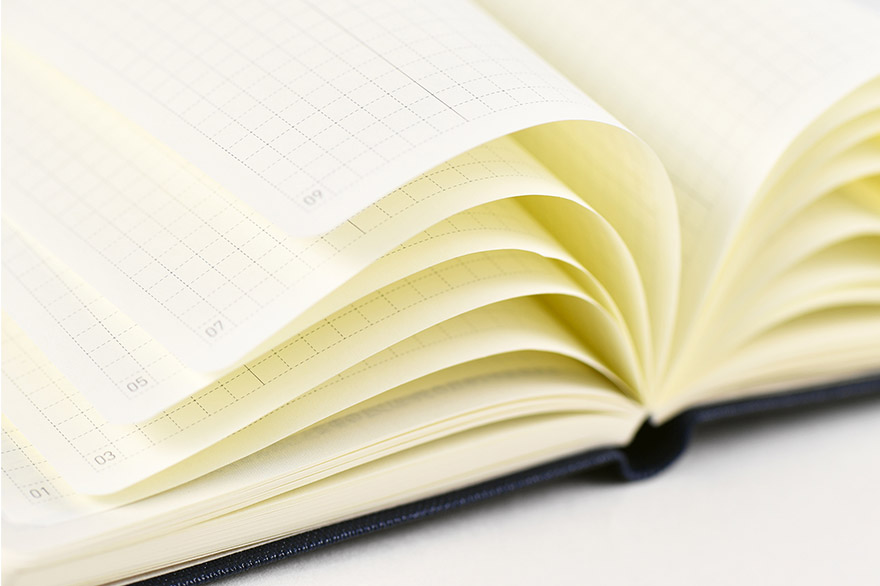
The Weeks book has space for writing in plans or journal entries, and it also has 69 pages of grid paper memo pages in the back (73 pages in the English edition Weeks and the April-start version). The back of the book contains informational pages, including An Interview with Myself and Seasonal Sweets to Make at Home.
The Hobonichi Techo 2024 Weeks book comes in either Japanese or English. If you love this cover, then you can pick out which language you’d like in that book.
*The English edition book only comes in January-start.
If you’d like storage space or a way to change up the look of your Weeks book, you can customize your book by pairing it with a Weeks cover.
See Weeks cover lineup
About Botanist Tomitaro Makino
Born April 24, 1862 in present-day Sakawa Town, Kochi Prefecture. Raised in the rich natural surroundings of Tosa City, he began to study botany independently as a young child. Moved to Tokyo and devoted himself to botanical research through the Department of Botany at Tokyo University’s Faculty of Science.
Founded “The Botanical Magazine” with a close friend; they collaborated to publish their discovery of the flowering plant Yamatogusa in 1889. Collected over 400,000 specimens during his 94-year lifespan, and named over 1,500 discovered species. Known as the “Father of Japanese Botany.”
Information provided by the Makino Botanical Garden.
Staff List
- Photographer
- Styled Images: Eri Morikawa / Product Detail: Hiroyuki Oe
- Stylist
- Noriko Miyazaki
![]()
- Tomitaro MakinoShihai SumireWeeks Hardcover Book
- ¥2,970(incl. tax)
Recommended Techo Books and Covers
![]()
- January-start
- JPN/ENG
- ¥5,390 - ¥6,490
- ¥3,520
- January-start
- JPN/ENG
- ¥5,390 - ¥6,490
- ¥3,520
![]()
- January-start
- JPN/ENG
- ¥2,970 - ¥3,520
- January-start
- JPN/ENG
- ¥2,970 - ¥3,520
![]()
- January-start
- JPN/ENG
- ¥5,280 - ¥5,830
- January-start
- JPN/ENG
- ¥5,280 - ¥5,830
![]()
- January-start
- JPN/ENG
- ¥7,920 - ¥9,790
- ¥5,060
- January-start
- JPN/ENG
- ¥7,920 - ¥9,790
- ¥5,060
![]()
- ¥15,400
- ¥15,400
![]()
- ¥13,200
- ¥13,200
![]()
- ¥14,300
- ¥14,300
![]()
- ¥14,300
- ¥14,300
![]()
- ¥5,390
- ¥5,390
![]()
- ¥13,200
- ¥13,200
Recommended Stationery and Accessories
![]()
- ¥440 - ¥682
- ¥440 - ¥682
![]()
- ¥1,320
- ¥1,320
![]()
- ¥1,540
- ¥1,540
![]()
- ¥550
- ¥550
![]()
- ¥3,960
- ¥3,960
![]()
- ¥220 - ¥330
- ¥220 - ¥330
![]()
- ¥550
- ¥550
![]()
- ¥1,980
- ¥1,980
![]()
- ¥2,200
- ¥2,200
![]()
- ¥660
- ¥660
![]()
- ¥495 - ¥605
- ¥495 - ¥605
![]()
- ¥1,980
- ¥1,980
![]()
- ¥297 - ¥1,485
- ¥297 - ¥1,485
![]()
- ¥660
- ¥660
![]()
- ¥440
- ¥440
![]()
- ¥330
- ¥330
![]()
- ¥4,800
- ¥4,800
![]()
- ¥3,850
- ¥3,850
Compatible Techo Covers
Specifications
Size H: 188 x W: 94 x T: 10 mm / H: 7.4" x W: 3.7" x T: 0.4"
*Specifications may vary slightlyWeight Approx. 140 g Main material Rayon / Paper - Weeks Book (English / January Start)
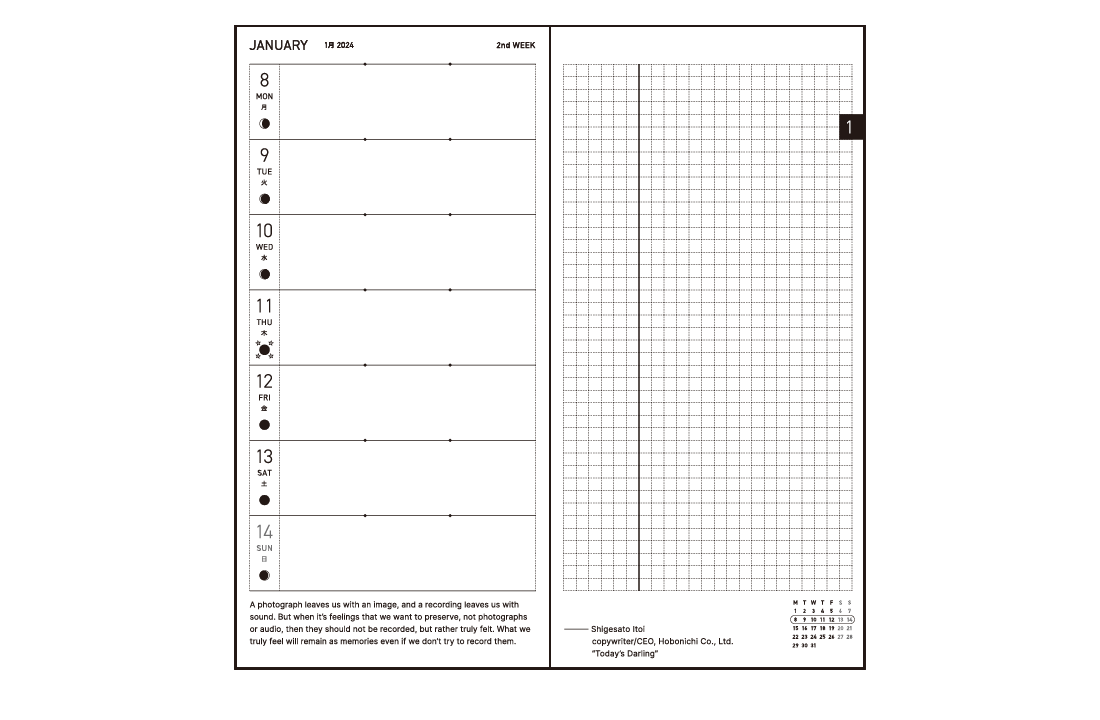
Language English Pages 240 pages Paper Type / Binding Thin, light Tomoe River paper resistant to bleeding and designed for planners / Stitch-binding Graph Paper Size 3.55 mm Start of Week Monday-start week Yearly Calendar 2023, 2024, 2025 Yearly Index Jan. - Dec. 2024 (2 pages) Monthly Calendar Dec. 2023 - Mar. 2025 (32 pages) Daily Quotes One per week (English) Weekly Calendar Nov. 27, 2023 - Jan. 5, 2025 (116 pages)
*All weekly pages include quotes.Graph Paper 73 pages Bonus Pages Shorthand Note-Taking / Using Common Items to Measure Size / Favorites / My 100 / An Interview with Myself / Seasonal Sweets to Make at Home / 365 Days Check-Off Sheet / Contact List / Personal Notes Listed Information Week of the year / Moon phase (weekly pages include every phase, monthly calendars only include full and new moon) Other See the Exploring Each Type page for more details - Weeks Book (Japanese / April Start)
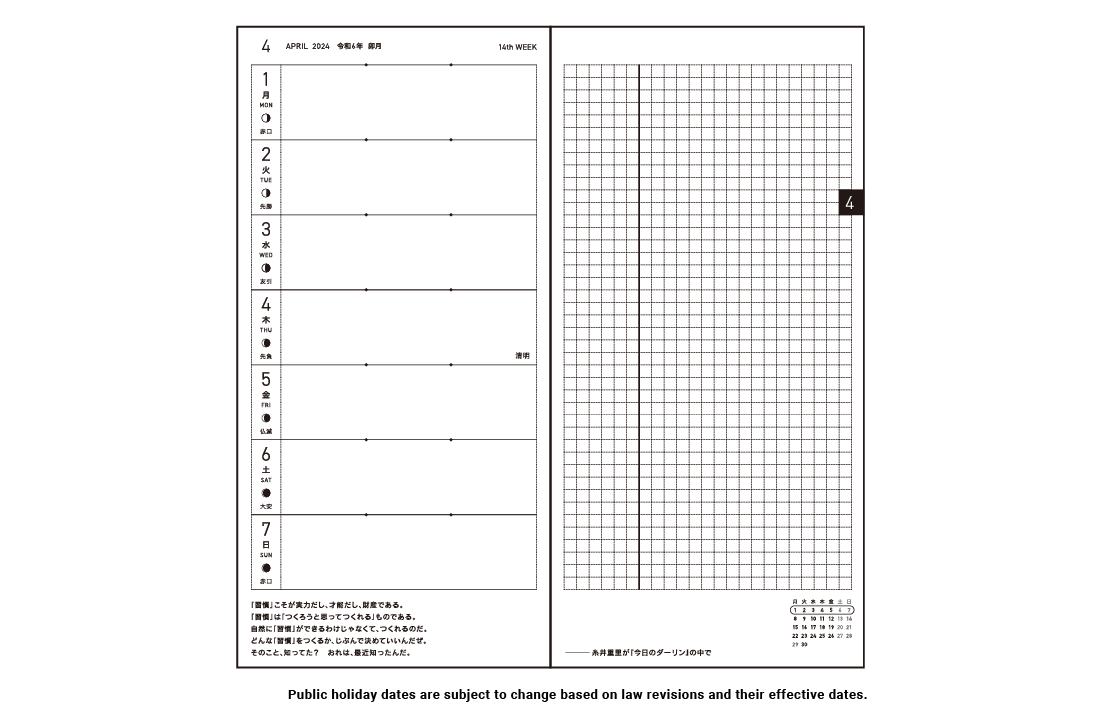
Language Japanese Pages 240 pages Paper Type / Binding Thin, light Tomoe River S paper resistant to bleeding and designed for planners / Stitch-binding Graph Paper Size 3.55 mm Start of Week Monday-start week Yearly Calendar 2023, 2024, 2025 Yearly Index Apr. 2024 - Mar. 2025 (2 pages) Monthly Calendar Mar. 2024 - Apr. 2025 (28 pages) Daily Quotes One per week (Japanese) Weekly Pages Feb. 26, 2024 - Apr. 6, 2025 (116 pages)
*All weekly pages include quotes.Graph Paper 73 pages Bonus Pages Shorthand Note-Taking / Using Common Items to Measure Size / My 100 / An Interview with Myself / Seasonal Sweets to Make at Home / Solar Terms / Emergency Preparedness / Age Table / Conversion Chart / Getting the most of Hobonichi / Contact List / Personal Notes Listed Information Week of the year / Rokuyo (traditional Japanese calendar) / Solar terms / Japanese holidays / Moon phase (weekly pages include every phase, monthly calendars only include full and new moon) Other See the Exploring Each Type page for more details - Weeks Book (Japanese / January Start)
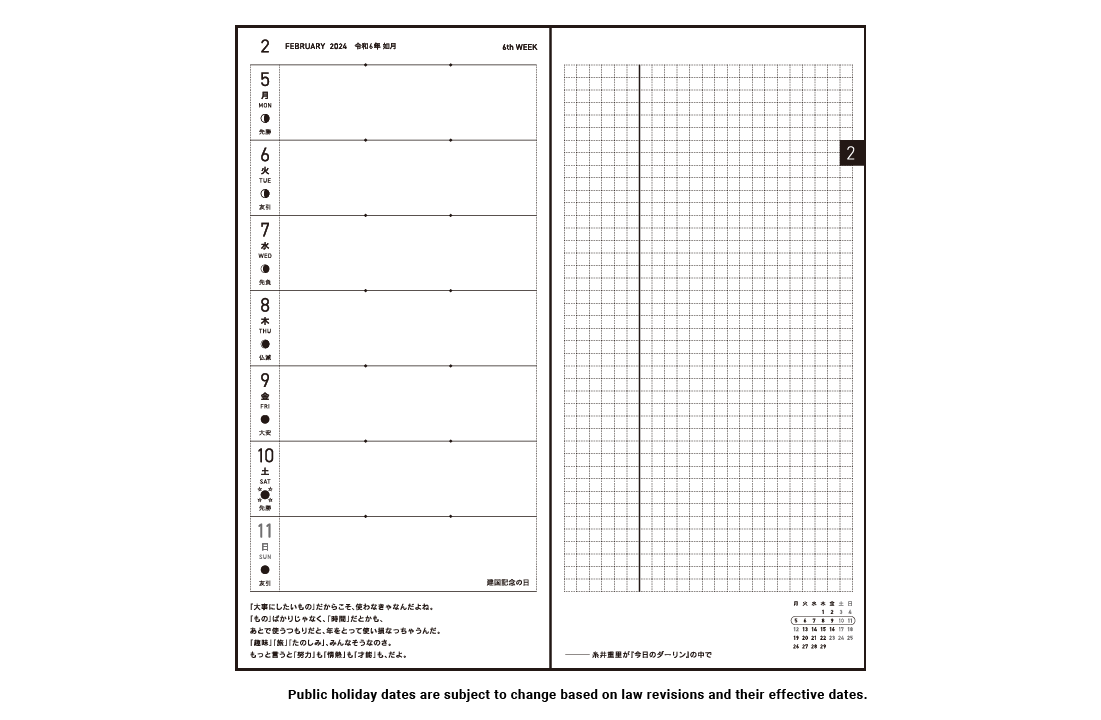
Language Japanese Pages 240 pages Paper Type / Binding Thin, light Tomoe River paper resistant to bleeding and designed for planners / Stitch-binding Graph Paper Size 3.55 mm Start of Week Monday-start week Yearly Calendar 2023, 2024, 2025 Yearly Index Jan. - Dec. 2024 (2 pages) Monthly Calendar Dec. 2023 - Mar. 2025 (32 pages) Daily Quotes One per week (Japanese) Weekly Pages Nov. 27, 2023 - Jan. 5, 2025 (116 pages)
*All weekly pages include quotes.Graph Paper 69 pages Bonus Pages Shorthand Note-Taking / Using Common Items to Measure Size / My 100 / An Interview with Myself / Seasonal Sweets to Make at Home / Solar Terms / Emergency Preparedness / Age Table / Conversion Chart / Getting the most of Hobonichi / Contact List / Personal Notes Listed Information Week of the year / Rokuyo (traditional Japanese calendar) / Solar terms / Japanese holidays / Moon phase (weekly pages include every phase, monthly calendars only include full and new moon) Other See the Exploring Each Type page for more details
Please Read Before You Buy
In order to provide you with the most satisfaction for your product, we've compiled a list of warnings, potential issues, and tips to keep in mind for this particular product. Please be sure to read this information carefully before placing your order.
- Test fountain pens before regular use
The Hobonichi Techo's Tomoe River / Tomoe River S paper is designed to prevent bleed-through, but some fountain pens and water-based ink pens are not compatible with this paper. When switching to a new pen, we recommend testing the pen somewhere in the book, such as the back memo pages, to see if the ink bleeds through or takes an especially long time to dry.
- Cover corners are slightly bumpy and shiny
The corners of the cover contain light traces of press marks, shines, and lumps. This is an unavoidable part of the manufacturing process.
- Coloring may stain other objects
The dye in the cover may stain other objects if it rubs against or sticks to them, especially if the cover is wet from water or sweat from your hands. Please store with care.
- Imprinted year numbers may peel
The numbers of the year are stamped onto the cover in metallic or other colored leaf, so strong rubbing or everyday use may cause the numbers to peel off.
- Avoid storing in hot and humid places
Please avoid storing your product in hot, humid places or placing it atop other objects for long periods of time as this may result in lower quality and color stains.
